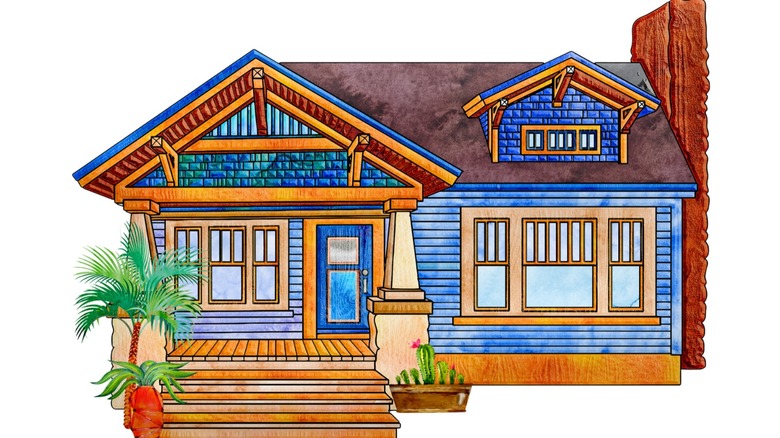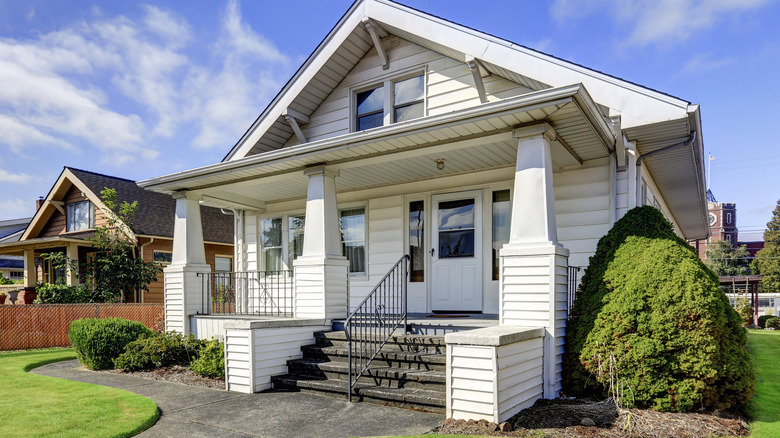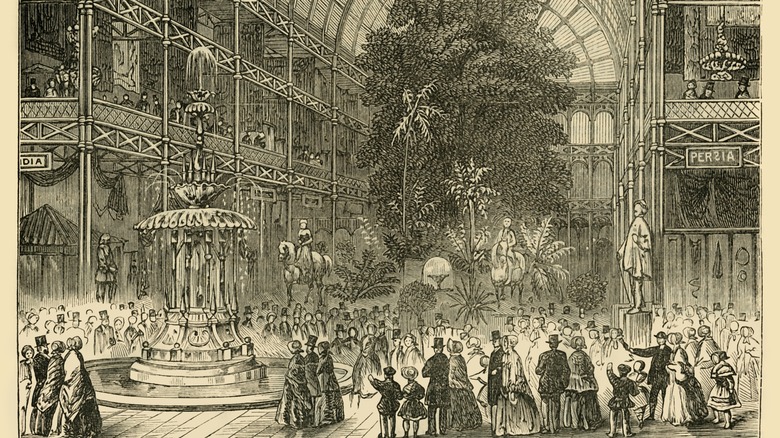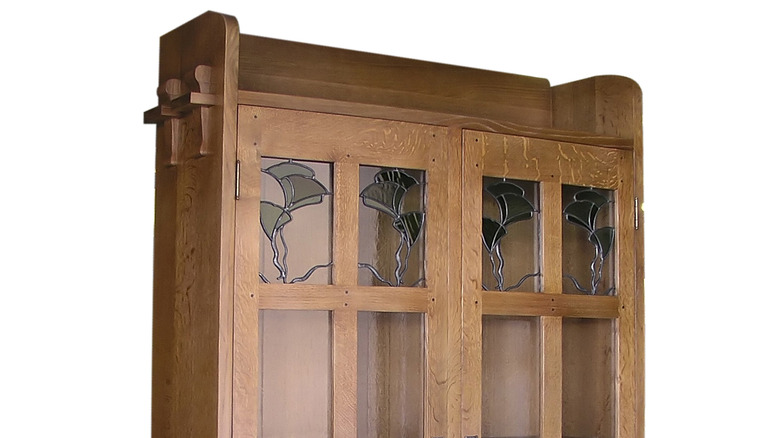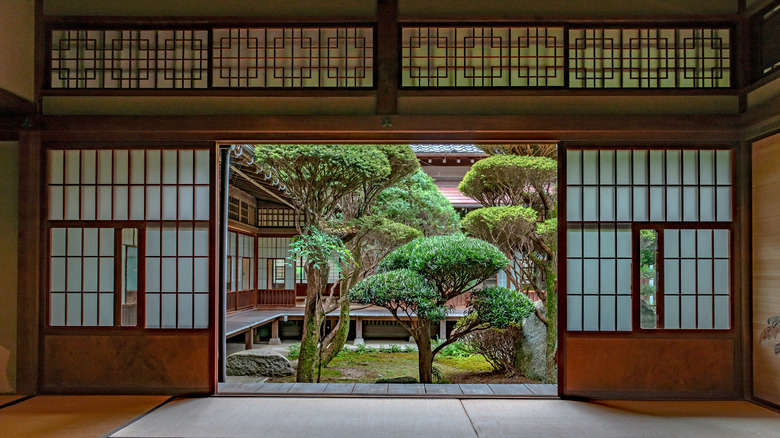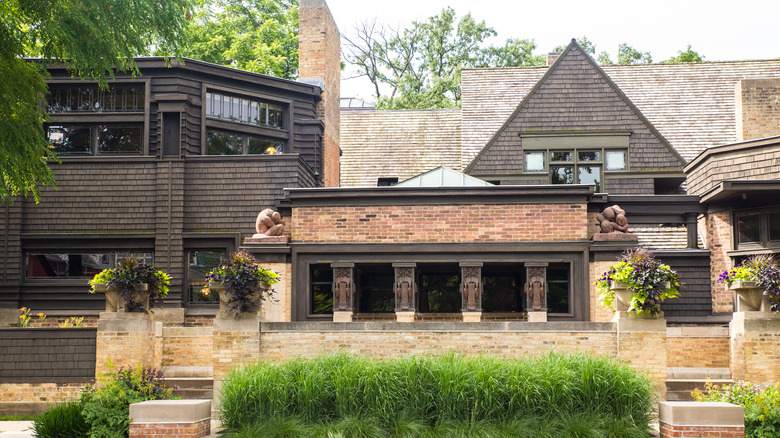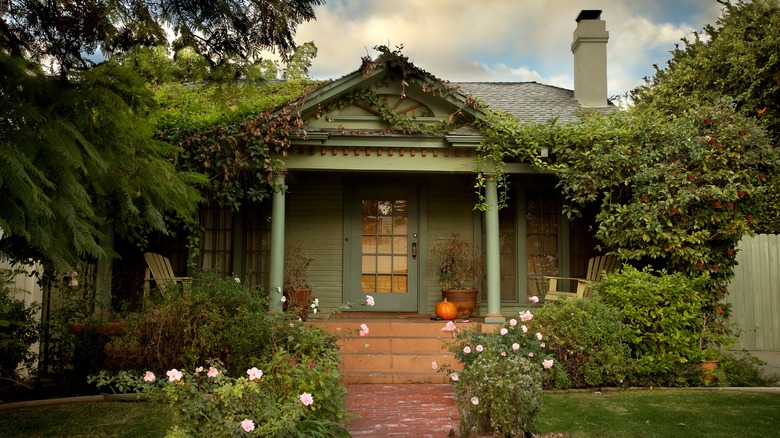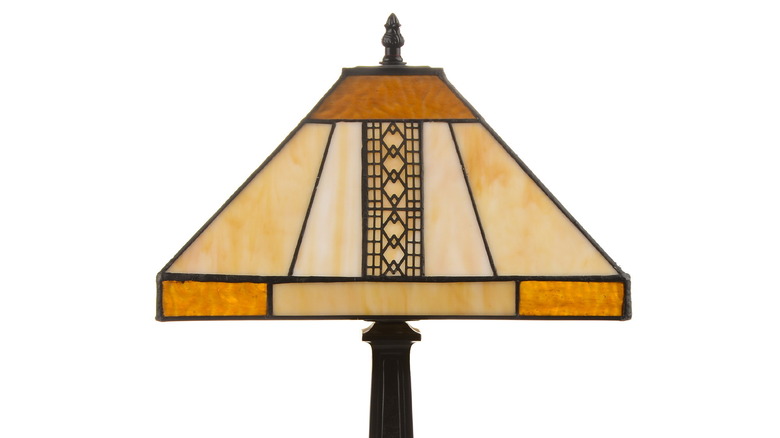What Is A Craftsman-Style House?
The Craftsman movement in architecture and design developed in response to the overly-ornate Victorian-era elements. A proper Victorian house had some combination of towers, turrets, dormers, curved windows, wrapped porches, columns, several stories, and some sort of cupola on top– all in bright colors, and all at once. Talk about overkill.
Movements of any nature — whether political, artistic, or popular — don't just appear out of nowhere. They're typically a response to the preceding movement and the social and economic conditions of the time. The Craftsman style is no different. Its roots are deeply embedded in the mid-19th century British Arts and Crafts movement, a way of thinking that worked its way to the U.S., where outspoken advocates further catalyzed the movement. These voices and ideas were embraced en masse by the general population, and so from roughly 1905 to 1920, thousands of Craftsman-style houses were built in the U.S.
Original Craftsman houses are now 100 years old or more, yet they retain their characteristic structure and unique silhouette. Although the Craftsman movement eventually lost momentum, as most trends do, the design elements such as tapered columns, graceful porches, and airy front entries are still found in houses being built today.
The Craftsman look
Masterclass describes how original Craftsman houses are usually modest, one or one-and-a-half-story free-standing homes. They look wider than they are tall because of the overhanging roof on the first floor, and the gable (triangle shape) on the upper floor. Craftsman homes are most often asymmetrical and have a porch on at least one side of the façade. The front face usually has tapered columns that appear to be rooted in the ground, but extend higher than the front porch with no break, to support the bottom of the highest floor. Because they look wider than they are tall, Craftsman houses can look a bit stout, but they primarily appear as if they have grown out of the earth organically.
Interiors usually have wood flooring or trim built in beautiful, clean lines. Most often the main rooms have an open design to bring in as much natural light as possible. Formal rooms often have wood-beamed ceilings. In the living room, a fireplace with a mantel is the dominant element, flanked by built-in bookshelves on either side. Craftsman houses also have large, double-hung windows, and some originals also indulged in hand-made stained glass panels to beautify and customize the interior.
Craftsman origins
Just as modern media follows the ups and downs of movie stars, athletes, and influencers, mid-19th century public attention focused on the ideas and works of architects, artists, and poets. Great Britain was deeply enmeshed in the Industrial Revolution at this time. The Art Story describes how by 1851, the Great Exhibition held in London captivated the attention of the entire country and beyond to all of Europe. Foremost among the articles on display at this large exposition were mass-produced items — things made not by craftsmen or artists, but by machines. Influencers of the day such as writer John Ruskin, young architect William Morris, artist Dante Gabriel Rossetti, and others spoke out against these decorative displays, which were fraught with Victorian-era excess.
And thus, the British Arts and Crafts movement was born. It offered an ideal of a more wholesome style of living by surrounding society and families with nature-based designs using traditional materials such as stone and wood and created by skilled men and women applying their craft. The ideas these cutting-edge creatives embraced quickly spread through Europe and to America, which had its own set of leaders promoting a return to a simpler lifestyle than the one idealized by Victorian style-makers.
Stickley's New Furniture
Probably the most famous name in the American Craftsman movement is Gustav Stickley. The Stickley Museum describes how this son of German immigrants was trained as a stonemason, but then worked in and eventually managed his uncle's furniture factory in Pennsylvania. In 1895 at the age of 37, Stickley traveled to Europe where he was deeply impacted by the Arts and Crafts movement. Back in the U.S., he was inspired to create what he termed "New Furniture." This was a series of sawn oak pieces that rejected overwrought Victorian design in favor of strong, clean lines without embellishment, and an emphasis on the beauty of wood — its natural color, grain, and texture. Stickley furniture, sometimes called Mission Style furniture, is today considered a valuable antique and collector's item.
In 1901 Stickley created a magazine called "The Craftsman" that introduced the philosophies of Ruskin, Morris, and other thinkers to American readers. Coverage expanded to art and literature, furniture and design, and even some political issues. Around this time, Stickley began printing architectural designs for houses that evoked the movement.
By the time the publication folded in 1916, it had published over 200 designs for modest, simple structures; homes made from basic materials, designed to coexist with the surrounding land. Thousands of readers saw these designs, and the plans were made into real houses, many of which exist to this day, from Maine to California.
Landmark California homes
Charles and Henry Greene, brothers born outside Cincinnati, studied architecture at MIT. Arts and Crafts Homes describes how they were summoned by their retired parents to Pasadena, and the two traveled from Ohio to California in 1893. They stopped in Chicago to take in the World's Columbian Exhibition, which featured engineering achievements and structures from around the world.
Here the brothers were introduced to classic Japanese architecture, with its timber frames, sloping exterior roofs, flexible interiors, and its emphasis on using nature as a source of inspiration. The style closely paralleled the Arts and Crafts movement and notably affected the Greene brothers' vision.
Their most crowning achievements seamlessly married the two movements together, resulting in several landmark houses, including the Gamble House, Blacker House, and Thorsen House. These are all examples of the epitome of Craftsman style. Most Craftsman houses of the era were modest dwellings under 2000 square feet with symmetrical rooms, but also with an organic kind of flexibility.
Craftsman leads to a unique style
Another architect greatly influenced by the Arts and Crafts movement was Frank Lloyd Wright, whose uniquely American Prairie style is rooted in the landscape. The Spruce describes how the development of this style led Wright to reach further into modernism, eventually founding an aesthetic all his own. However, the influence of both Japanese architecture and Arts and Crafts styles is evident. Classic Prairie style reads as horizontal, as do Craftsman houses. Both emphasize natural materials, airy interiors, and large windows to reflect a healthy lifestyle filled with fresh air and open to the environment.
The Craftsman Bungalow describes how Wright's custom designs are studied and emulated to this day. From his own studio in Oak Park, Illinois to the plans and finished houses Wright designed throughout the city, it's easy to spot elements of the Craftsman style. It's also clear to see how the wide porches, large windows, and flat upper story inspired Wright to develop the Prairie style, with its emphasis on clean, horizontal lines, open interiors, and walls of windows.
Everyone dreams of a home
Craftsman homes built in the U.S. during the heyday of the movement are now 100 years old or older. All Craftsman homes were built by hand, in relatively modest neighborhoods, although some homeowners with the means to do so created larger Craftsman houses with wider wings and deeper interiors on larger plots of land. A true Craftsman building is never more than two stories tall. However, the appeal of the Craftsman style has endured through the decades, and today there are many plans available for newly-constructed homes that carry design elements of the originals.
So popular was the style, that the catalog company Sears, Roebuck and Company offered nearly 500 styles of pre-assembled house kits between 1908 and 1940, many of them designed in the Craftsman style. While no one is sure exactly how many Sears houses were built in the U.S., the company estimates more than 100,000 houses were sold through the Sears' Modern Homes program, and many of these houses still exist today.
Occasionally, Craftsman-style houses are referred to as bungalows, which is a misnomer according to the Encyclopædia Britannica. Bungalows were used in 18th and 19th century India, Singapore, and other trade centers in Asia as a way to house British soldiers, merchants, and their families. The term actually originates from a Hindi phrase meaning "in the Bengali style". However, bungalows are built in many styles, from Craftsman to Cape Cod, Spanish, Foursquare, and more. So 'bungalow' doesn't necessarily equate with Craftsman design, although many charming Craftsman homes are bungalows.
The colors of nature
Modern Bungalow illustrates how traditional Craftsman-style color schemes are rooted in the natural world, celebrating simple beauty and quality craftsmanship. Exterior paint colors are drawn directly from nature, so the Craftsman style typically presents in earth tones, from browns and beiges to dark greens, and sometimes a touch of brick red. For the interior, picture the colors of fall – rust orange, forest green, olive, goldenrod, cream, deep royal blue, and, of course, wood tones ranging from pale almond to dark oak.
The trick to blending these colors is to consider their visual weight. Three dark colors, no matter how much they complement each other are often too heavy or visually intense to be used together. The lighter the shade, the better it complements other colors. But Craftsman houses are not designed for too many pastel shades. As is commonly found in nature, a contrasting mix of dark and light tones that complement and play off one another works best to bring a sense of air and light into the interior.
Interior accents
Of course, the Arts and Crafts movement wasn't relegated just to building homes. The era also included a surge of handmade household items from furniture to carpets, pottery, jewelry, china, silverware, and more. The Met describes how the anti-industrial Arts and Crafts movement began in the U.S. in the 1870s and lasted until about 1920. During this time, the products being made were less about adhering to a defined style, and more focused on creating something by hand rather than mass-production by machines.
Each industry had its own luminaries, revered for their originality and inspiration — Stickley and his new furniture, for example. Designers at Newcomb pottery were heavily inspired by the plants and landscape of the deep South, and the intense colors and organic shapes present in the lamps and windows of Louis Comfort Tiffany are still highly coveted. While many original Arts and Crafts pieces still exist, they can be quite costly, as they are considered rare and highly valued antiques. Though, the inside of a Craftsman home would be an ideal place to decorate with a few original accessories or furniture to augment the era's style. With just a bit of online research, it's easy to find modern pieces created in the iconic style that showcase the same commitment to hand-crafted quality.
